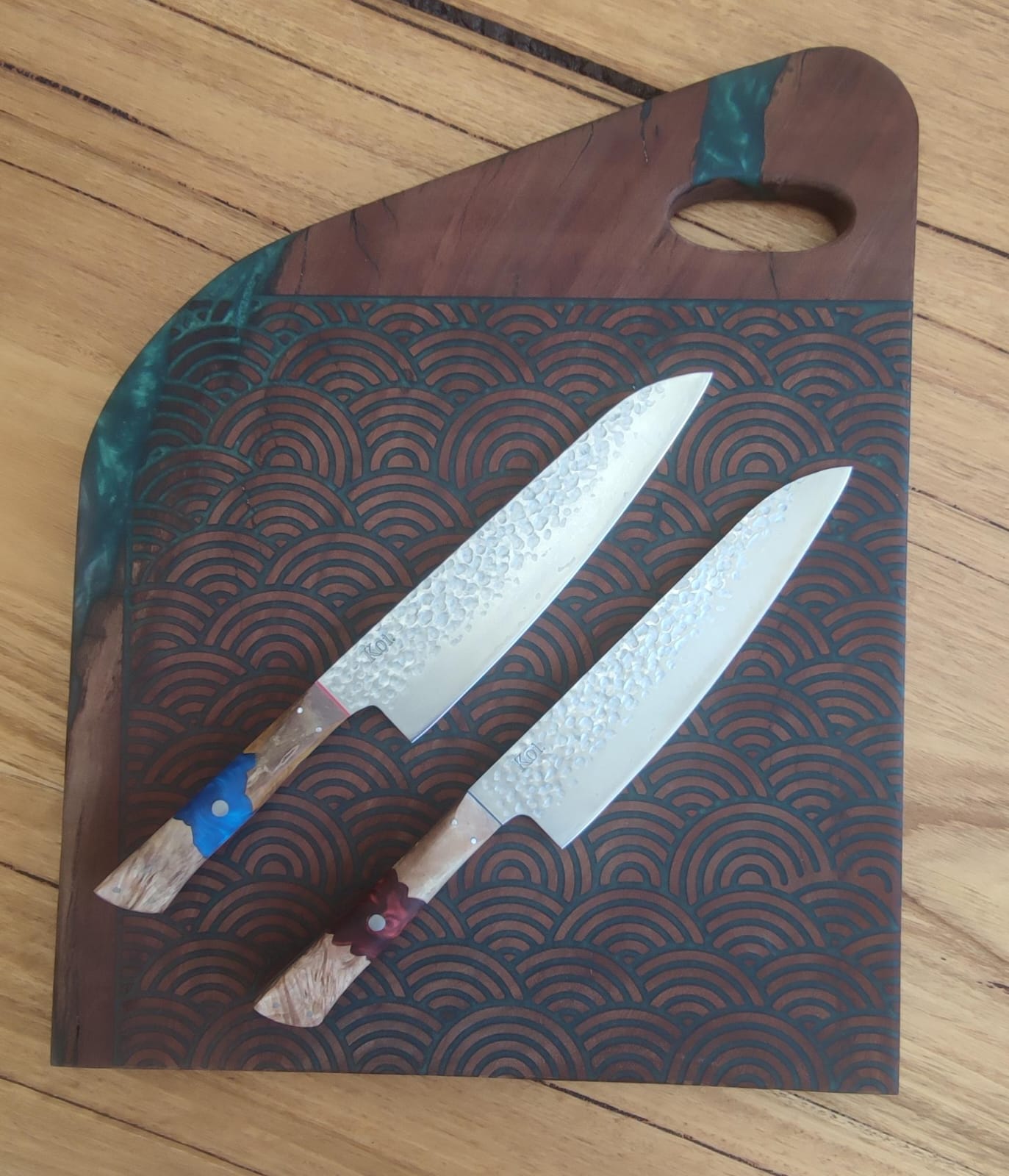The Usuba is a single bevelled long knife. It is one of the basic knives that must be mastered by the professional Japanese chef and this takes lots of years. This is because single-bevel blades tend to move away from the centre, making it difficult to make precision cuts without some level of proficiency.
Origin of the Usuba
There are two variants of the knife, the Kansai Usuba and the Kanto-Usuba
The Kansai-Usuba, also known as the Kamagata-Usuba, originates from the Kansai (Osaka) region where the imperial court was first situated and has a spine that goes down to the pointed tip. The Kansai Usuba is particularly famous for doing neat, delicate chops on vegetables. It is the best knife for decorative cutting.
The Kanto-Usuba, also known as Edo-Usuba, originates from the Kanto region in Tokyo and has a square blunt tip, making it look like a small meat cleaver.
Both variants are well suited to chop through vegetables with a clean slice even vegetables with heavy roots, thanks to its extremely sharp chiselled edge.
Meaning of Usuba and the purpose of this knife
The purpose of the Usuba can be read from its name which translates to “thin blade”. The Usuba is used to cut vegetables without cracking them.
In Japanese cuisine, cooking starts when the ingredients are prepared. It is believed that an efficient blade must not cause a change in the food structure or the taste and the Usuba correctly does this.
The thin blade knife cuts through vegetables without breaking down the cell walls, preventing the vegetables from discolouration and alteration in flavour. The Usuba is used to make specific cuts such as the Katsuramuki or Kazarigiri because of its length and thin blade. The Katsuramuki is a technique used to cut a vegetable cylinder into a thin sheet
The Kansai Usuba with a pointed tip is used for more delicate work and decorative carvings. They are used to prepare food with beautiful presentation and harmony.
Design Specifications and Applications
The Usuba is usually 165mm - 210mm in length. As it is a single bevelled knife, the Usuba is a handed knife. This means that left-handed users have to be very careful to order a knife suited to them. In the Usuba knife, the spine is many times parallel to the edge.
The length of the Usuba makes it suitable for cutting vegetables and fruits which are served uncooked. The midsection of the blade can also be used for thinly slicing vegetables. The relatively long blade makes it suitable for manoeuvring large vegetables like cabbages.
However, the knife should not be used on vegetables and fruits that have hard skin or hard stones as this may damage the knife. The pointed tip of the Kansai Usuba is also susceptible to breakage if not handled carefully.
This knife is one of the best choppers out there, the flat blade of the knife makes it great for push cutting or chopping rather than rock cutting.
It is perfect for slicing vegetables and making decorative slices on these vegetables.
Many times, the Usuba is compared to the Nakiri because they share similar functions as Japanese vegetable knives. There is however a big difference in the shape of the cutting edge. The Usuba is conventionally single-bevel, and this means that the cutting edge is sharpened only from one side. In contrast, the Nakiri is a double-bevel knife where both sides of the blade are sharpened. This difference allows the Usuba to cut better and thinner slices than the Nakiri. The Usuba is also typically heftier, thicker, of higher quality and more expensive than the Nakiri. Therefore, the Usuba is ideal for professional use and the Nakiri for home use.
Where would you find this knife
The Usuba knife will be found in restaurants that serve Kyoto cuisine and Sushi. Kyoto is landlocked, thus, they rely heavily on vegetables, which makes the Usuba a very important part of their kitchen utensils.



